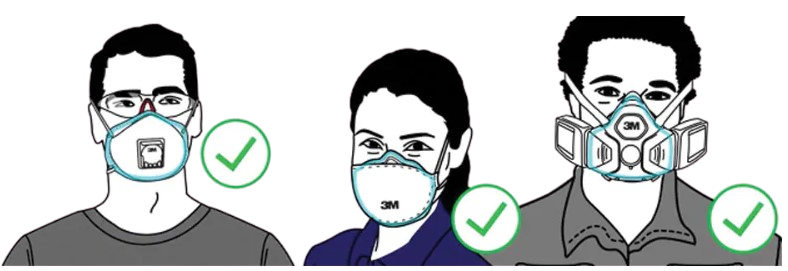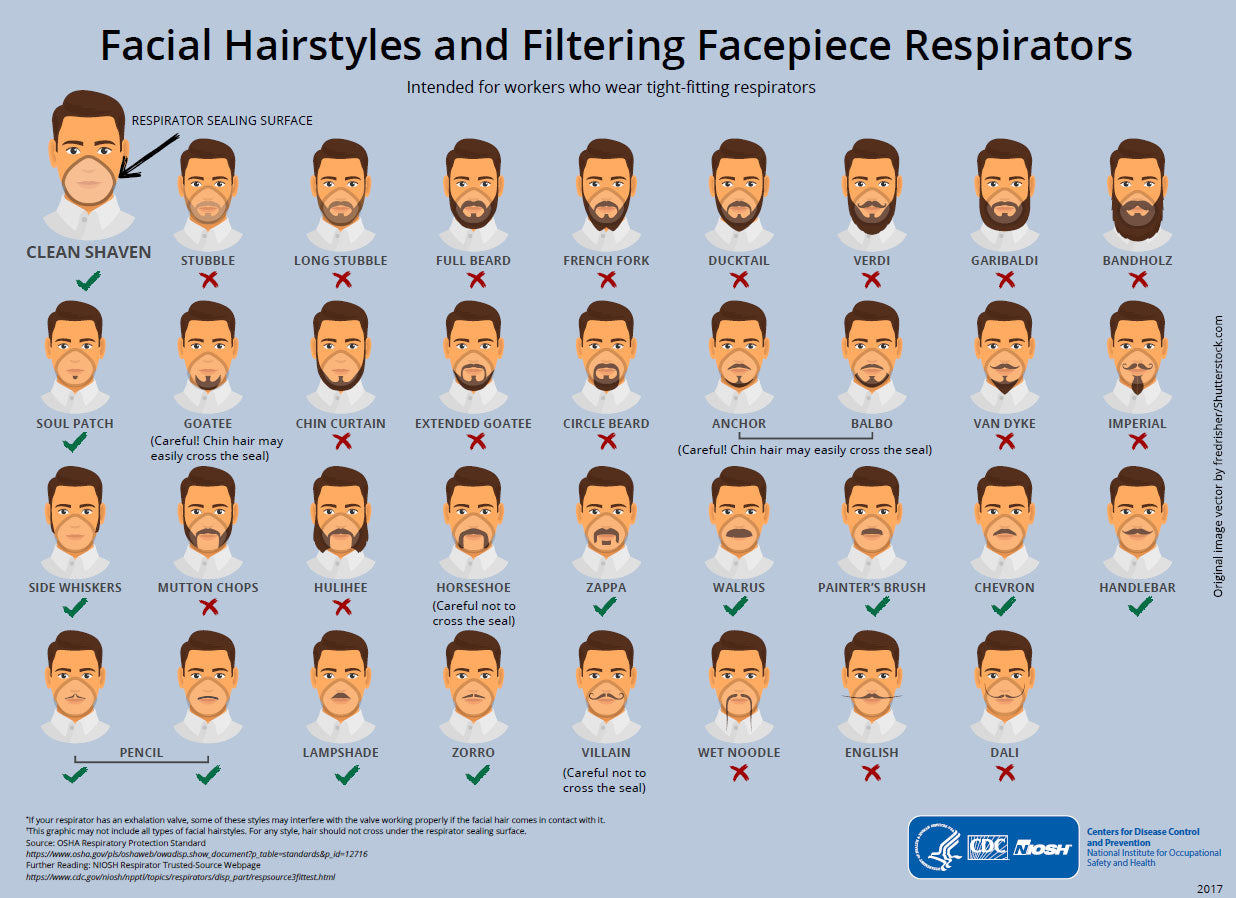Choosing the Right Size 3M Respirator Mask
FULL FACE RESPIRATOR MASK SIZING
Resource Center Topics
Coronavirus Information
Ebola Information
Ebola Virus Information
Ebola Donning
Ebola Doffing & Disposal
Hearing Protection
Avian Bird Flu Information
Chemical Safety
General Workplace Safety
Basic First Aid
Ergonomics
OSHA Checklist for General Industry
Welding Safety
Healthcare/Laboratory
Electrical Safety
Respiratory PPE is important to keep employees safe on the jobsite. However, respirator masks are NOT one size fits all. The size of your face, any facial hair, and other required PPE will affect how well the mask fits to your face. A good fit means the respirator will seal to your skin and a respirator can only work when air passes through the filter. Air will take the path of least resistance, so if the seal isn't there the air will go around rather than through the respirator. If a worker's respirator doesn't seal properly, there's no certainty it is providing the expected protection.
To avoid this, fit testing is required for employees wearing tight-fighting respirators, such as disposable or reusable respirators. Fit testing is required in the US by the Occupational Safety and Health Administration (OSHA) before a user wears a mandatory respirator on the job, and must be assessed at least annually. In addition, fit tests should be performed:
Whenever a different size, style, model or make of respirator is used.
When any facial changes occur that could affect fit, such as significant facial hair, weight fluctuation or dental work.
Does Facial Hair Affect Respirator Fit?
The OSHA Respiratory Protection Standard (29 CFR 1910.134) prohibits fit testing of employees if there is any hair growth between the skin and facepiece sealing surface, such as stubble beard growth, beard, moustache, or sideburns which cross the respirator sealing surface. See the infographic below from the CDC that shows which types of facial hair patterns are acceptable for tight fitting respirators:
Regulations are specific that nothing – be it facial hair or any other condition or article of clothing - should be permitted in the sealing area of a tight-fitting respirator or allowed to interfere with respirator valve function – and that respirator fit testing should not be conducted on people for whom this is the case. Because of this, Enviro Safety Products as well as the major manufacturers of these masks do not recommend conducting qualitative or quantitative fit tests on people wearing negative-pressure respirators (half and full facepiece air-purifying respirators) or positive-pressure tight-fitting respirators with any facial hair that extends under the respirator seal or interferes with valve function.
How to Determine Correct Respirator Sizing
There are two primary types of fit testing, a Qualitative Fit Test or a Quantitative Fit Test. There are few major differences between the two tests, specifically in the types of respirators they can test. Here are the primary differences between the two types of tests:
Qualitative Fit Test (QLFT)
A qualitative fit test (QLFT) may only be used to fit-test:
- Negative-pressure, air-purifying respirators, as long as they’ll only be used in atmospheres where the hazard is at less than 10 times the permissible exposure limit (PEL), or
- Tight-fitting facepieces used with powered and atmosphere-supplying respirators.
QLFT is pass/fail and relies on the user’s senses using one of four OSHA-accepted test agents:
- Isoamyl acetate (banana smell); only for testing respirators with organic vapor cartridges.
- Saccharin (sweet taste); can test respirators with a particulate filter of any class.
- Bitrex® (bitter taste); can also test respirators with particulate filters of any class.
- Irritant smoke (involuntary cough reflex); only for testing respirators with level 100 particulate filters.
Each QLFT method uses seven exercises performed for 1 minute each:
- Normal breathing.
- Deep breathing.
- Moving head side to side.
- Moving head up and down.
- Bending over (or jogging in place if fit test unit doesn’t permit bending at the waist).
- Talking.
- Normal breathing again.
Quantitative Fit Test (QNFT)
A quantitative fit test (QNFT) can be used to fit-test any tight-fitting respirator. It involves using an instrument to measure leakage around the face seal and produces a numerical result called a “fit factor.”
There are three OSHA-accepted QNFT test protocols:
- Generated aerosol uses a non-hazardous aerosol such as corn oil generated in a test chamber.
- Condensation nuclei counter (CNC) uses ambient aerosol and doesn’t require a test chamber.
- Controlled negative pressure (CNP) uses a test that creates a vacuum by temporarily cutting off air.
QNFT is pass/fail and relies on the user’s senses using one of four OSHA-accepted test agents:
- A fit factor of at least 100 is required for half-mask respirators and a minimum fit factor of 500 for a full facepiece negative-pressure respirator.
Each QNFT method uses seven exercises performed for 1 minute each:
- Normal breathing.
- Deep breathing.
- Moving head side to side.
- Moving head up and down.
- Bending over (or jogging in place if fit test unit doesn’t permit bending at the waist).
- Talking.
- Normal breathing again.
In addition to these 7 tests, “grimace” test where the subject smiles or frowns for 15 seconds is also required.
Watch this video to see the importance of respirator fit:
Some final notes on fit testing:
Compatibility with other PPE
Safety glasses, hearing protection, face shields, hard hats and coveralls can all vie with a respirator for real estate on a person's face, head or body.
To catch these problems before they happen on the job, OSHA requires any PPE that could interfere with the respirator's seal to be worn during the fit test.
User seal check: An essential everyday test
A user seal check ensures the tight-fitting respirator is being worn right each time the user puts on the respirator. Employees are required to do so by OSHA regulations unless the use is voluntary
Users can either perform a positive-pressure or negative-pressure seal check as described in the product User Instructions
Is Quantitative Fit Testing Better than Qualitative Fit Testing?
US OSHA accepts both QLFT and QNFT. Studies have been published regarding the advantages and disadvantages of QNFT. It should be noted that little to no correlation was found between quantitative fit factors and respirator performance unless poor-fitting respirators were included in the analysis. In other words, those subjects who failed a quantitative fit test also showed lower respirator performance. But higher fit factors above the minimum requirement did not necessarily translate to higher respirator performance. Rather, wearers who pass either a qualitative or quantitative fit test and are part of complete respirator program that meets all local regulatory requirements can expect their respirator to reduce inhalation exposure according to the assigned protection factor (e.g., by a factor of 10 for half facepiece respirators).
Respirator Rules of Thumb
Leave the area immediately and then check your mask and/or filters if:
- If you can taste it
- If you can smell it
- If you can feel it
- If you feel drowsy, dizzy, confused, or nauseous
- If it stings, irritates or causes discharge (runny noses, etc..)
- If something feels or seems wrong
It is important to note that not all chemicals cause side effects. Some are odorless, tasteless, and have no symptoms other than injury or death.
Common Questions about Respirators
- How long do respirator filters last?
- Do I have to be clean shaven to wear a respirator?
- What do respirator filter ratings mean?
- How do I fit test my respirator?
Quick, unofficial fit test*
The following is a way to quickly determine if a full face mask or half face mask is fit properly to an individual. This is not accepted by OSHA or any formal agency - so use at your own risk. But if you run into a situation where fit testing is not available or not required, and the only choice is not testing or doing a quick test like this, you may wish to consider this. Of course, in any situation where the fumes, chemicals or particles may damage health or risk life, a professional fit testing is a must.
- Don the respirator as you normally would.
- Tighten the straps.
- Place your hands gently over the filter mount holes. It's important to NOT to press in.
- Breath in. You should find it impossible to breath.
*Utilize this procedure at your own risk! This procedure does not substitute in any way for a proper fit test and a site evaluation for chemical levels and quantities
Side-by-side Respirator Comparison
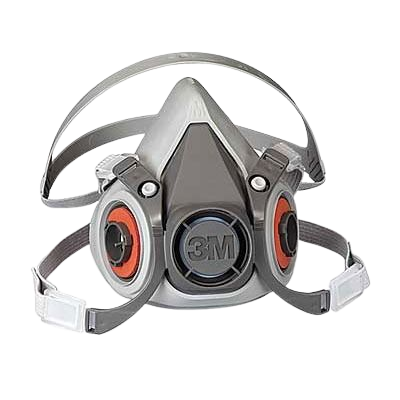
Half Facepiece Respirators
Suitable For:Provides protection against gases, vapors, or particles when equipped with the appropriate cartridge or filter.
Fit Test Passing Criteria:A fit factor of at least 100 is required for half-mask respirators.
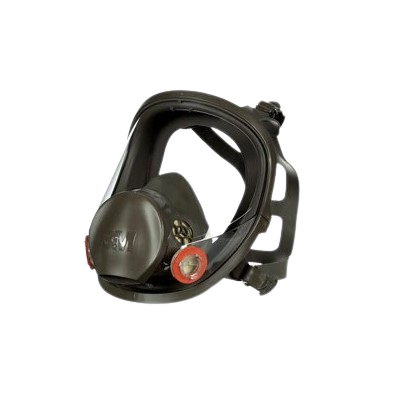
Full Facepiece Respirators
Suitable For:Air-purifying respirators that have the potential to provide protection from many types of dusts, fogs, fumes, mists, gases, smokes, sprays, or vapors.
Fit Test Passing Criteria:Minimum fit factor of 500 for a full facepiece negative-pressure respirator.
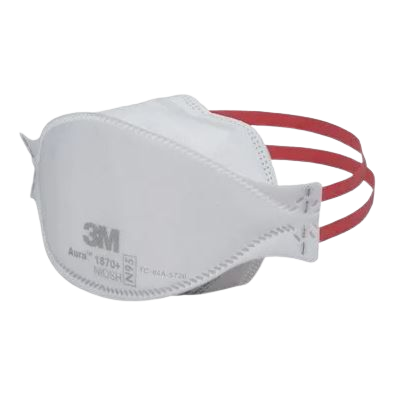
N95 Respirators
Suitable For:Intended to seal tightly to the face, covering the mouth and nose, and can filter at least 95% of airborne particles.
Fit Test Passing Criteria:A fit factor of at least 100 is required for half-mask respirators.
Sources
https://www.osha.gov/laws-regs/regulations/standardnumber/1910/1910.134AppB1
https://www.cdc.gov/niosh/npptl/images/infographics/FacialHairWmaskLG.jpg
https://www.osha.gov/laws-regs/regulations/standardnumber/1910/1910.134AppA
https://www.envirosafetyproducts.com/3m-bitrex-qualitative-fit-test-kit.html
https://www.envirosafetyproducts.com/respirators-safety-protection/respirator-fit-testing.html

